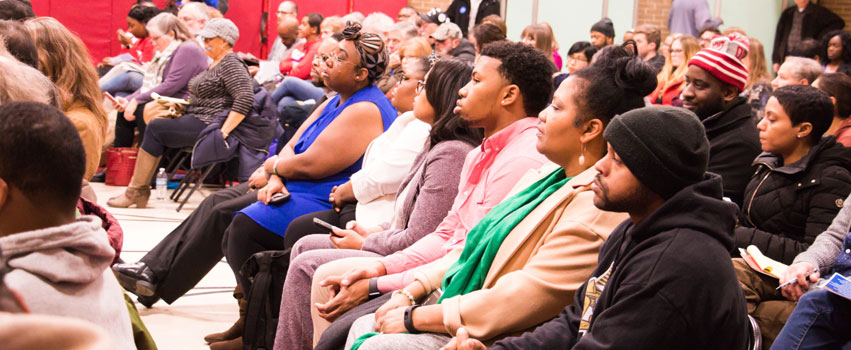A Landmark for the Modern Era
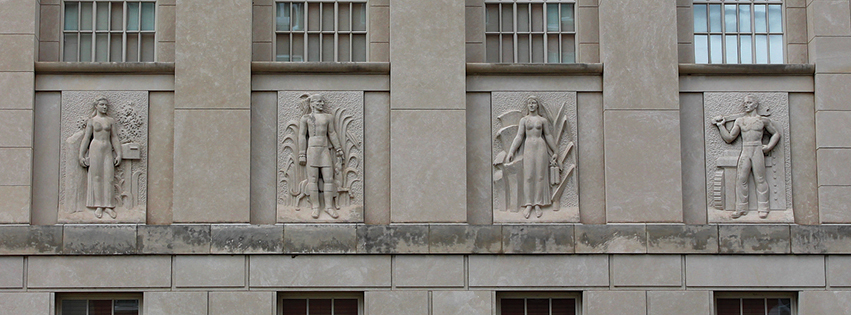
It was built during the Great Depression, a landmark for its civic nature and prominent downtown location. It is passed daily by many Peorians and visitors to the city as they transit from the bluffs down to the river valley. It was dedicated in September of 1938 as Peoria’s new U.S. Post Office and Court House, housing the post office on the first floor and numerous federal agencies, including the U.S. District Court, throughout the rest of the building. It is known as the Federal Building—a civic landmark then and now.
Style Moderne
The Federal Building stands out today, as it did at the time of its completion, for the architectural style in which it was built. Articles and accounts from the 1930s describe it as “contemporary” or “modern”; the style would be identified today as Moderne. It replaced a structure known as the “Government Building,” constructed in 1885 and used for similar purposes—but there could not have been a starker difference between the architectural styles of the two buildings.
One imagines the inhabitants of Peoria in the 1930s would have thought the Federal Building well-suited for the burgeoning modern era. Its construction delivered hope and optimism due to its futuristic appearance against the downtown backdrop, as many of the surrounding buildings had been erected nearly a century earlier. Peoria, like the rest of the country, needed the hope for the future that this modern structure provided, as all Americans struggled with the fallout of the Great Depression and the onset of war overseas.
The Depression impacted most of the world in some manner, and Peoria was not immune to the downturn, the effects of which were not fully relieved until the U.S. entered World War II. According to my research, however, our city fared better than some. There was unemployment in Peoria, to be certain, as in the rest of the country. A March 1936 account stated that “relief clients” formed 7.1 percent of the Peoria County population—that’s more than 10,000 individuals who would have been receiving government assistance. But as with the hope brought by the construction of the Federal Building, there was hope (and employment) due to the many other substantial construction projects going on in Peoria at the time.
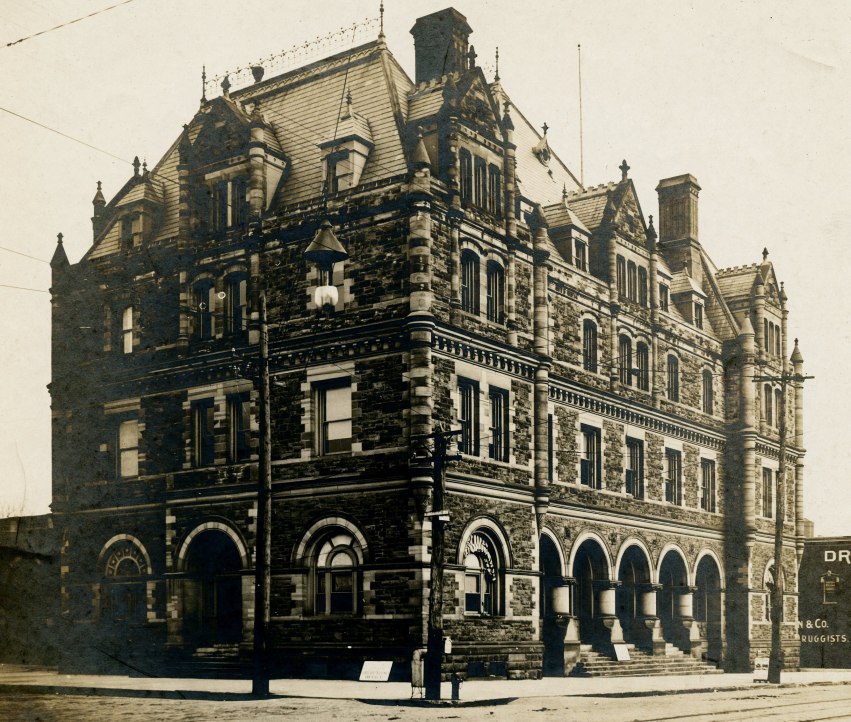
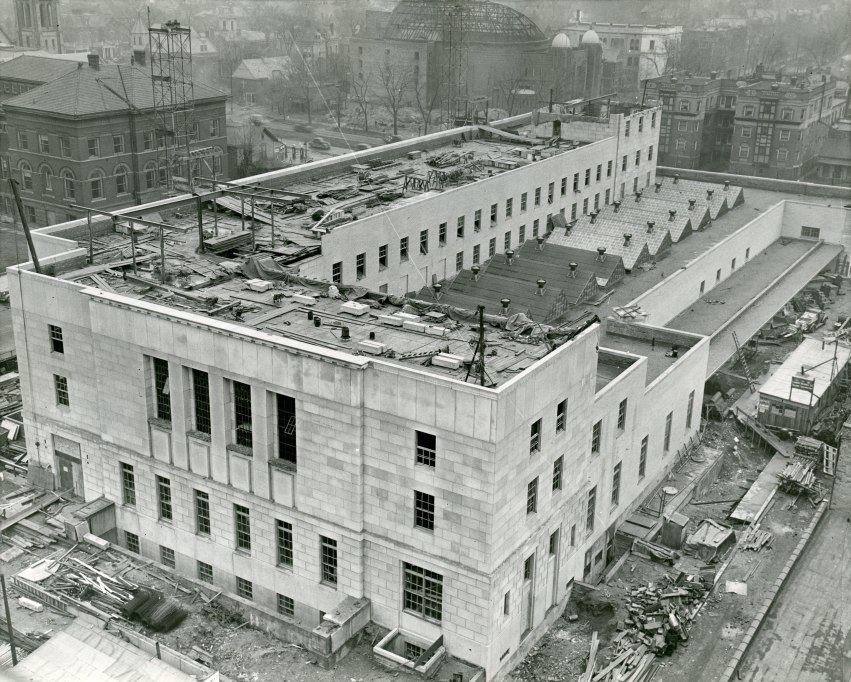
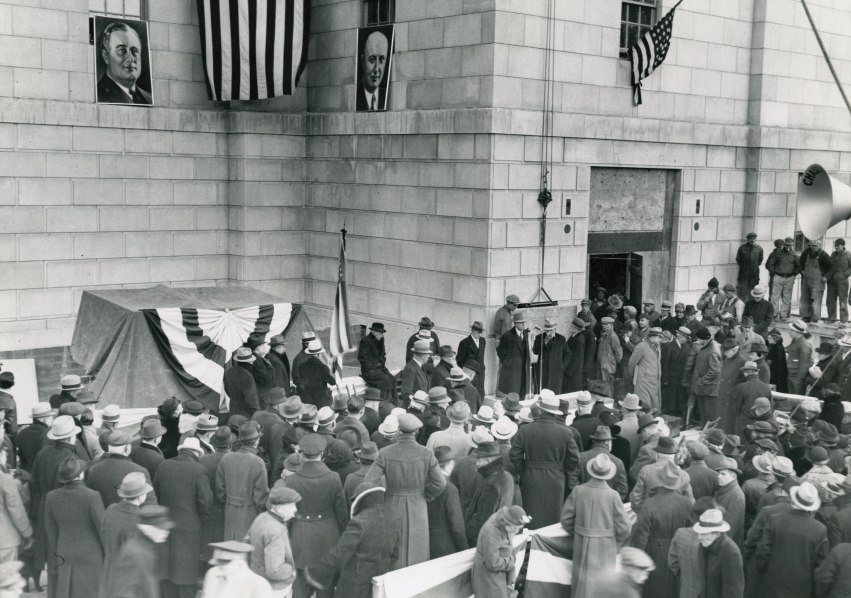
Building Construction Boom
In 1933, the United States saw the end of national Prohibition, and with it came the rebooting of Peoria’s alcohol industry. In the early days of the Depression, Hiram Walker selected the city’s south side to construct what was then the largest distillery in the world—and it was not the only firm to reinvest in the production of alcohol. Many older facilities were brought back to life, while new ones were built. There was also an uptick in demand for Peoria’s factory products, especially the earthmoving equipment of the Caterpillar Tractor Company. Throughout the 1930s, many additions were made to Caterpillar facilities across the river in East Peoria.
A quick scan of Paul Stringham’s “Notes on Peoria History” (an essential resource in the Peoria Public Library’s Local History Collection) finds that Peoria was seeing not only an increase in industrial production, but in the construction of facilities to house that production. Many other large commercial, retail and government buildings were being constructed during the 1930s—including the new River and Rail Terminal, the new Shrine Temple and the USDA’s Northern Regional Research Laboratory, better known as the “Ag Lab.” Other accounts speak of the construction of new movie theaters, grocery stores, schools, car dealerships, transit stations, a modern airport and hospital additions. The 1930s also saw a new, streamlined diesel passenger train called the “Peoria Rocket” make its first appearance. Like the Federal Building, it embraced modern design and was quite futuristic compared to the steam train it replaced.
A Palatial Stop
None of these structures, however, would have impacted the daily lives of Peorians quite like the new Federal Building. Although the city’s boundaries were much more compact in the 1930s, the population was only about 5,000 fewer than it is today—and downtown was the destination of choice for many of their civic, business, shopping and entertainment needs.
Main Street, which bounds the Federal Building’s southwest corner, held a continuous string of buildings of all types and sizes stretching from the base of the bluff all the way to the Illinois River. The intersection of Main and Monroe, where the Federal Building sits, would have been a bustling site, with thousands of people passing by every day. The Peoria Public Library’s main location was located across from the Federal Building, just as it is now, and Peorians would have visited both on their trips downtown, with the post office being an essential stop.
The exterior and interior of the Federal Building would have appeared not only modern, but almost palatial with its generous use of fine construction materials. An account dating to 1938 describes the building as such:
“A contemporary style of architecture is used with limestone exterior except the alley elevation, which has a facing of gray brick. A polished granite base extends around the building on all three street fronts. The entrances are of interesting design and are executed with doors and ornamental grills in bronze. The Monroe Street entrances lead into large vestibules with direct access to a Post Office lobby which is 20’ 2” wide and 180’ long. The Main and Hamilton Street entrances lead into public lobbies at the east and west ends of the building. Passenger elevators and stairs give direct access to the other Governmental Departments.”
The building’s interior, totaling nearly 37,000 square feet, was fitted with facings of rose marble covering the walls of the first-floor lobbies and corridors—at a price tag of $30,000 in 1938 dollars. The most striking features of the exterior are the four sculptural relief panels along the Main Street side of the building. Sculpted by artist Freeman L. Schoolcraft, they represent the postal service, agriculture, industry and Peoria’s Native American heritage. The total cost of the Federal Building in 1938 was nearly $1.2 million—the equivalent of $22 million today—which included the cost to purchase additional parcels of land to create a larger footprint than the previous Government Building.
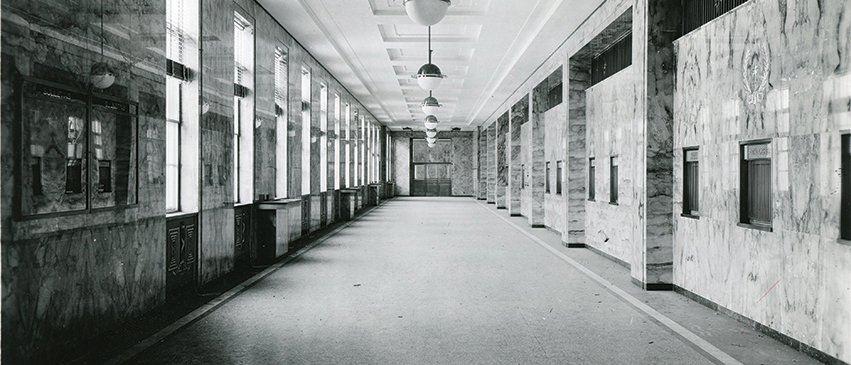
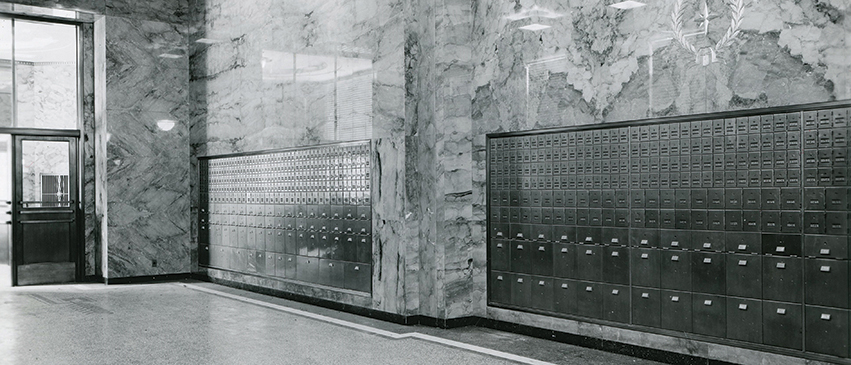
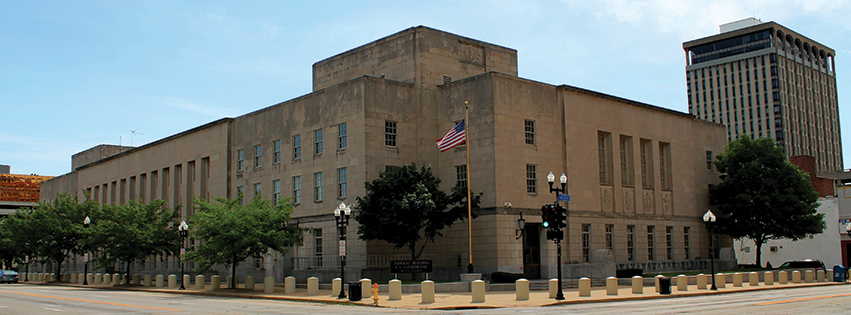
Traces of Inspiration
After it ceased to be a U.S. Post Office in 1981, the Federal Building sat mostly vacant until the late 1980s, when it was refurbished for expanded use by the courts and other governmental agencies. While the interior is not as accessible to the public as it once was, I encourage the reader to venture down to the corner of Main and Monroe and inspect this excellent example of Moderne architecture. Consider how inspired and proud Peoria’s citizens would have been to see this building erected at a time when Americans were searching for optimism and seeking hope for a better future. PM
